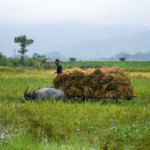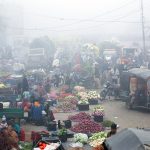Nigeria’s $2 billion sugar industry is attracting renewed investor interest as the Federal Government ramps up efforts to implement the second phase of its Nigeria Sugar Master Plan (NSMP II). This ambitious initiative aims to reduce the country’s dependence on sugar imports and build a self-reliant, value-driven sugar economy, reported Blueprint.
NSMP II outlines a far-reaching agenda: producing 161 million liters of ethanol, generating 400 megawatts of electricity, and creating 11.6 million metric tons of animal feed, alongside a major boost in domestic sugar output.
A key part of the plan is the development of 50,000 hectares of commercial sugarcane farms. Most of the expected production, about 70 percent, will come from brownfield projects that expand existing sugar operations. Greenfield projects are also in the pipeline, aimed at drawing over $4 billion in new investments.
Dr. Jide Abiona, an agricultural economist at the University of Lagos, said the plan represents more than a food production initiative. “Nigeria’s sugar plan goes beyond food—it’s about creating a value chain for energy, employment, and industrial raw materials. With the right implementation, this could transform rural economies,” he said.
However, Nigeria’s push for sugar self-sufficiency comes at a challenging time globally. Sugar prices have recently dropped to four-year lows, driven by expectations of record harvests. On Friday, sugar futures in both New York and London tumbled due to fears of oversupply.
According to the U.S. Department of Agriculture (USDA), global sugar production for the 2025–2026 season is expected to reach 189.3 million metric tons, a 4.7 percent increase from the previous year. This would result in a global surplus of 41.2 million metric tons, or 7.5 percent above global demand.
India, the world’s second-largest sugar producer, is projected to see a 19 percent rise in output to 35 million metric tons. This growth is backed by an increase in sugarcane planting and above-average monsoon rainfall, which the Indian Ministry of Earth Sciences has predicted at 105 percent of the long-term average.
Despite the global market downturn, Nigeria’s sugar strategy signals a long-term vision focused on local capacity-building, job creation, and energy diversification, priorities the government hopes will outweigh short-term market fluctuations.

















